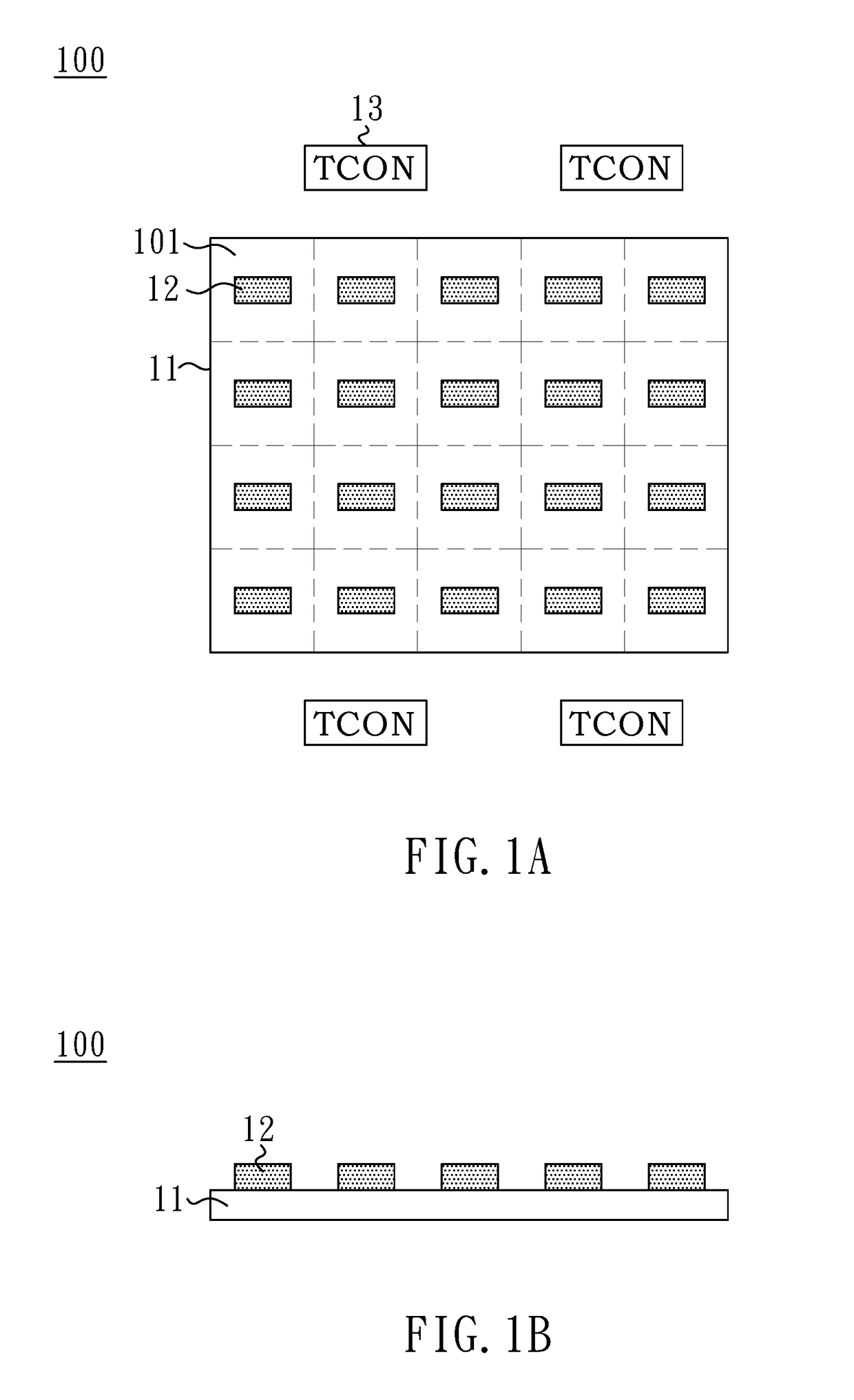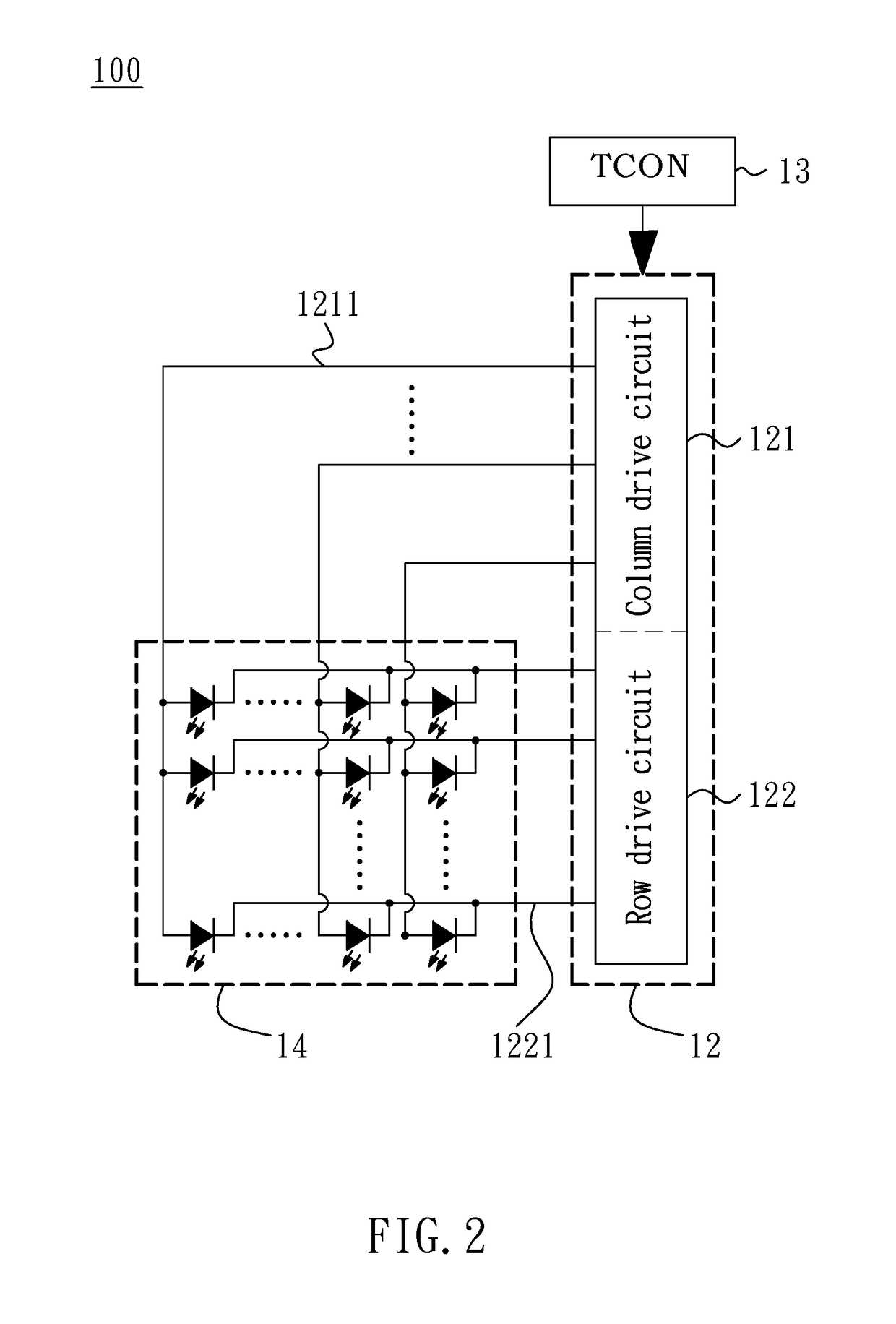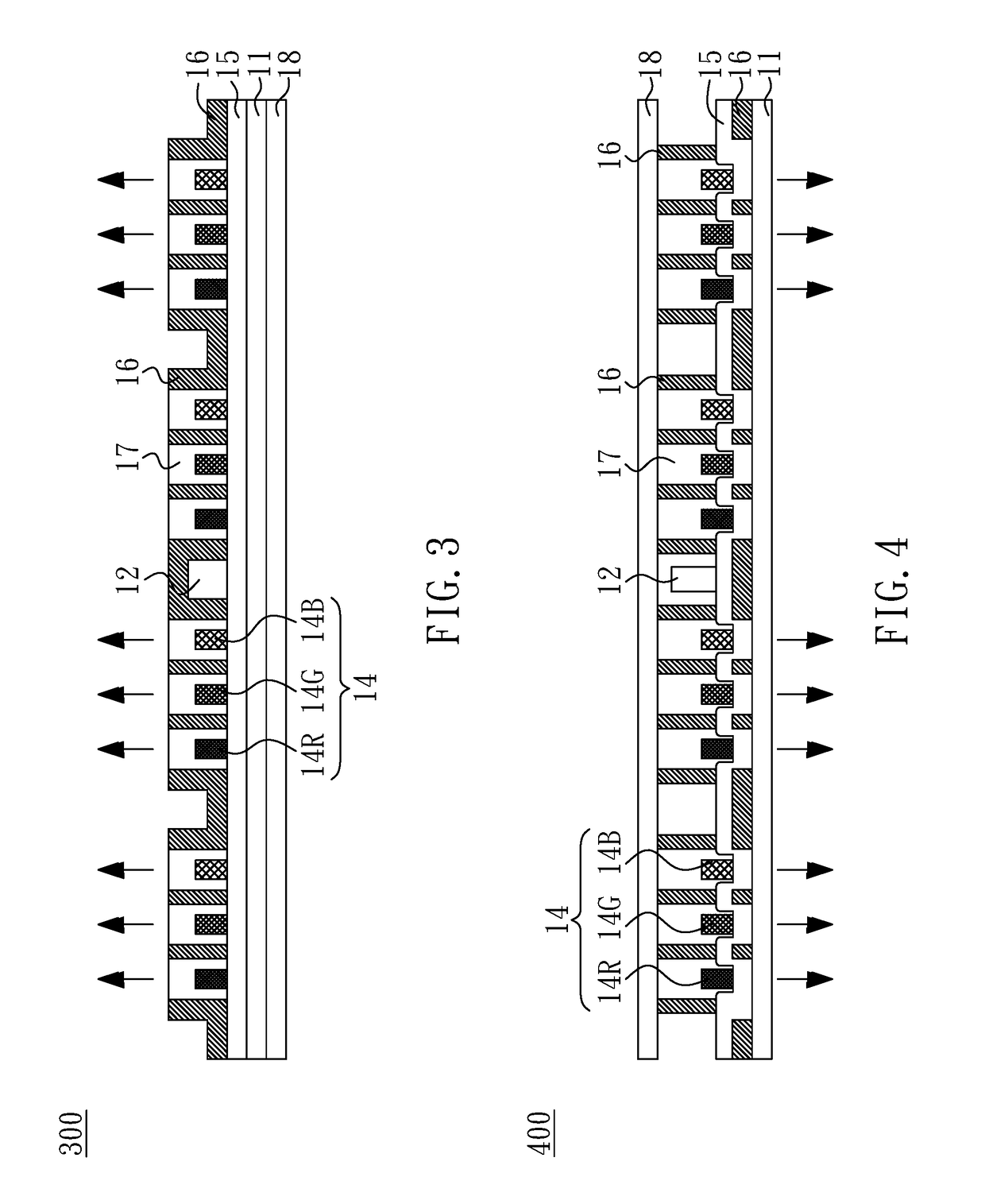MicroLED display panel
a display panel and micro-lead technology, applied in the field of display panels, can solve the problems of thermal mismatch, significantly affected, and more complex than flip chip technology, and achieve the effects of reducing the loading of drivers, simplifying the process of making display panels, and reducing the turn-on time of micro-leads
- Summary
- Abstract
- Description
- Claims
- Application Information
AI Technical Summary
Benefits of technology
Problems solved by technology
Method used
Image
Examples
first embodiment
[0032]FIG. 6A shows a partial enlarged side view of a microLED display panel according to the present invention. In the embodiment, a top surface of the substrate 11 has a recess 110 for accommodating an integrated circuit (e.g., the driver 12). In the embodiment, a sum of a depth d1 of the recess 110 and a height of the microLED 14 is substantially equal to a height of the driver 12. Accordingly, a top surface of the driver 12 and the top surface of the microLED 14 are at a substantially same level. Compared with the microLED display panel shown in FIG. 5, light emitted from the microLEDs 14 of the embodiment is not blocked by the neighboring driver 12.
second embodiment
[0033]FIG. 6B shows a partial enlarged side view of a microLED display panel according to the present invention. In the embodiment, a top surface of the substrate 11 has a recess 110 for accommodating an integrated circuit (e.g., the driver 12). In the embodiment, a depth d2 of the recess 110 is greater than a height of the driver 12. Accordingly, a top surface of the driver 12 is at a level lower than a top surface of the microLED 14. Compared with the microLED display panel shown in FIG. 5, light emitted from the microLEDs 14 of the embodiment is not blocked by the neighboring driver 12.
third embodiment
[0034]FIG. 6C shows a partial enlarged side view of a microLED display panel according to the present invention. In the embodiment, a top surface of the substrate 11 has a recess 110 for accommodating an integrated circuit (e.g., the driver 12). In the embodiment, a sum of a depth d3 of the recess 110 and a height of the microLED 14 is less than a height of the driver 12. Accordingly, a top surface of the driver 12 is at a level higher than a top surface of the microLED 14. Compared with the microLED display panel shown in FIG. 5, substantially less light emitted from the microLEDs 14 of the embodiment is blocked by the neighboring driver 12.
[0035]According to the embodiments discussed above, one may design recesses with different depths for accommodating integrated circuits with different heights according to the heights of the integrated circuits, respectively. One may design a groove with plural recesses according to the integrated circuit with the maximum height for accommodatin...
PUM
 Login to View More
Login to View More Abstract
Description
Claims
Application Information
 Login to View More
Login to View More - R&D
- Intellectual Property
- Life Sciences
- Materials
- Tech Scout
- Unparalleled Data Quality
- Higher Quality Content
- 60% Fewer Hallucinations
Browse by: Latest US Patents, China's latest patents, Technical Efficacy Thesaurus, Application Domain, Technology Topic, Popular Technical Reports.
© 2025 PatSnap. All rights reserved.Legal|Privacy policy|Modern Slavery Act Transparency Statement|Sitemap|About US| Contact US: help@patsnap.com



